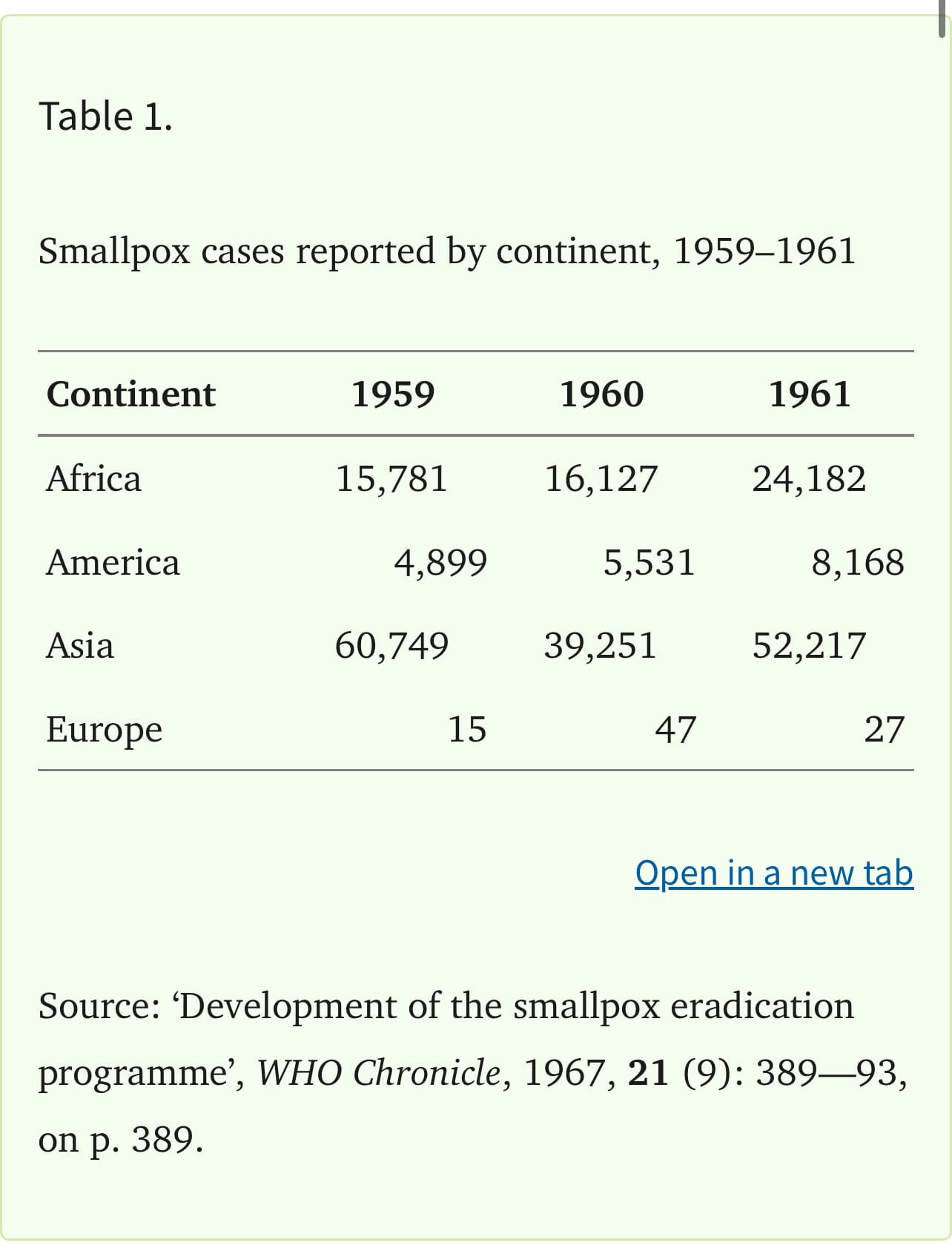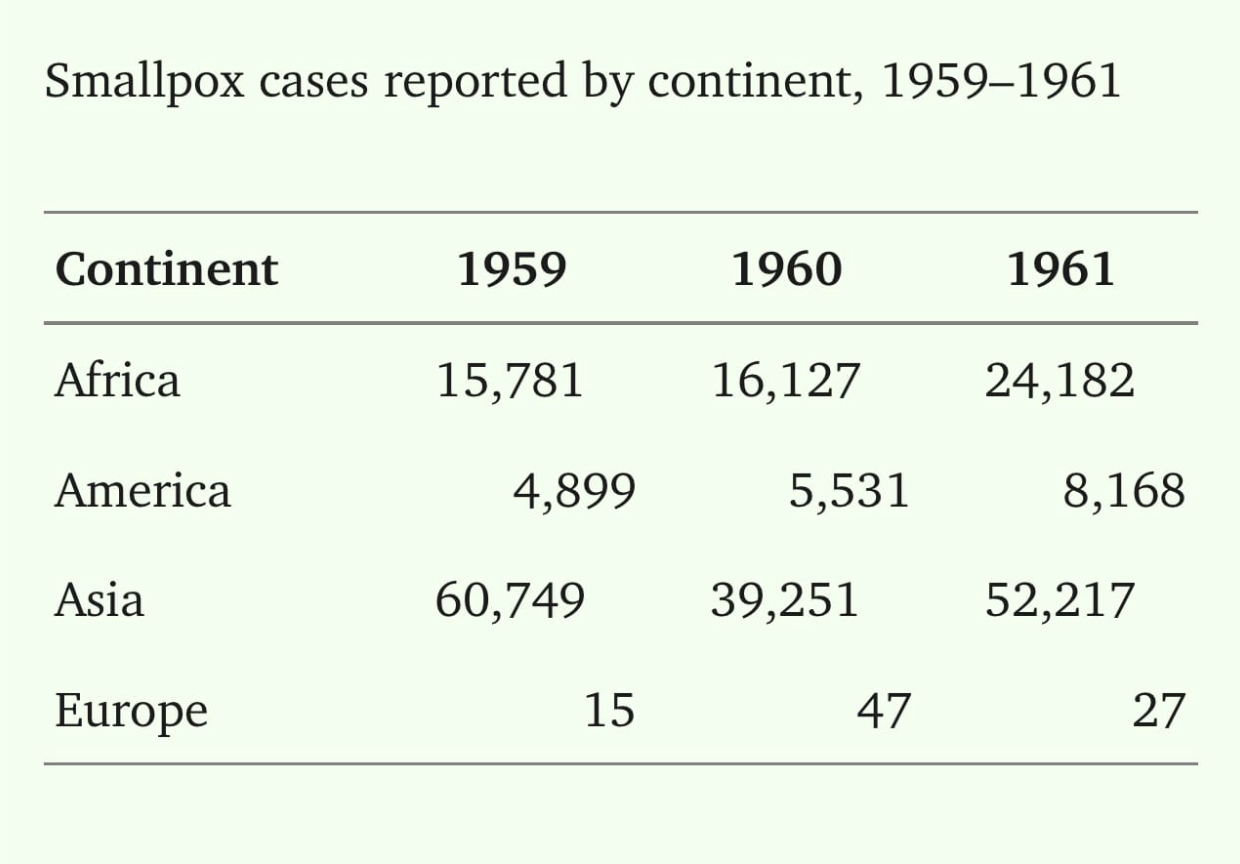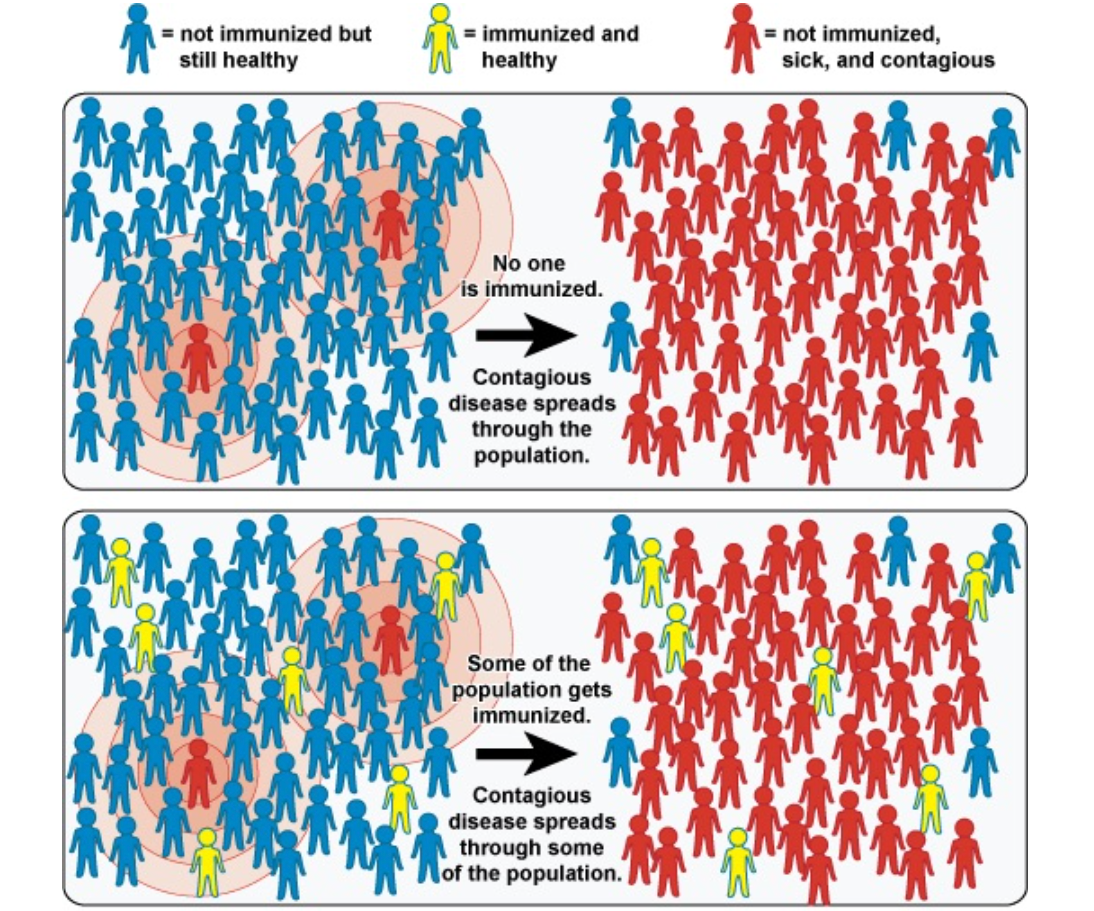"In the words of the report, 'vaccinations numbering 8,441 for a normal population of 6,500 inhabitants stopped any further spread of the epidemic'. Reports for the following years, however, show even more cases (1,206), and the epidemic did not subside until after the Second World War."
"In the post-war years smallpox epidemics not only increased in Nigeria but spread to the south and west where administrators had earlier prided themselves on the thoroughness of vaccinations."
"By 1953, however, Nigerian health officials could no longer blame Africans, as smallpox continued at high levels, despite increased vaccinations which rose from 2, 519, 464 in 1947 to 3, 699, 298 in 1953. As will be seen below, officials now turned to technical inadequacies for explanations."

"This question was especially important in colonies where little or no smallpox had previously been reported, such as Kenya and Uganda in the 1930s."
"The following overly optimistic report accompanied the description of an epidemic in Northern Nigeria in 1936: 'There is little doubt that opposition to vaccination is fast disappearing. Little or no difficulty is now experienced in persuading Native Authorities in Northern Nigeria to introduce compulsory vaccination of children (which already pertains for all persons in Southern Nigeria) and advantage is taken of this to offer protection to mothers and adults generally. In time, it is hoped that compulsory vaccination will be extended to all persons in the Northern part of the Protectorate which receives large numbers of immigrants from neighboring territories'."
"...French arrived there moving north from Gabon, the middle Congo, and the Ubangui-Chari rivers. These latter colonies remained virtually free from smallpox in the 1920s and 1930s, with all except Chad having no more than a few dozen cases reported in any year, and some colonies like Gabon reporting no cases."
"In addition, vaccination campaigns were also a response to outbreaks of epidemics. As time went on, and epidemics continued and even increased, they became the primary reason for vaccinations, although each epidemic usually brought a call for stepped up, regular vaccination service."
"The variations within Nigeria can be seen from Table 6 which shows that cases reported during the mid-1930s indicate a much higher prevalence of smallpox in the Northern provinces. Figures from fifteen years later, however, show a high prevalence in all regions."
"A chart of smallpox cases and vaccinations reported in the Belgian Congo, shows a rise of both cases and vaccinations. The colony was so large and the numbers so big, however, that, like Nigeria, it would require analysis at a smaller regional level to understand the relationship between vaccinations and prevalence."













Discussion